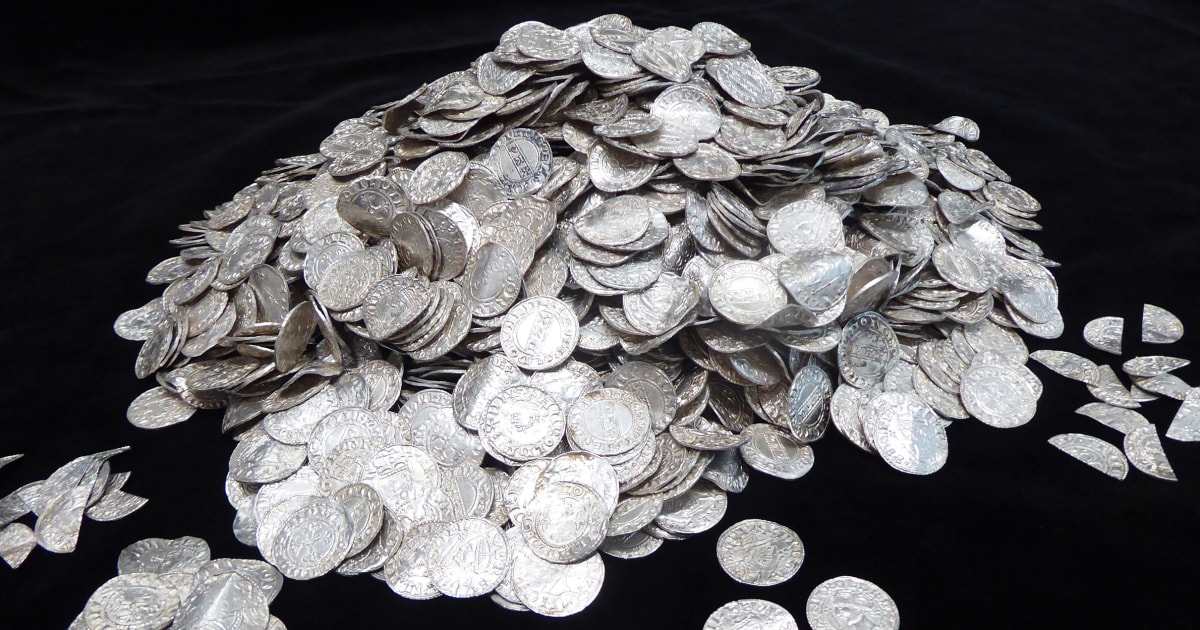Silver coins from 11th century sell for more than $5 million in U.K.

- by Admin
- October 23, 2024

A trove of 2,584 silver coins from the time of the Norman Conquest has been bought in the United Kingdom for more than $5 million — making it the country’s highest-value discovery ever made by treasure hunters.
Adam Staples and Lisa Grace found the bulk of the coins, estimated to be from the years 1066-68, in January 2019 alongside five other amateur metal detectorists in the Chew Valley area, 11 miles south of the city of Bristol.
Staples said he and the other detectorists were proud to have found such a significant piece of history. The proceeds, he said, will be split with the landowner.
The coins were purchased by the U.K.’s South West Heritage Trust, an independent organization that supports historical sites, with funding from two charities, the National Lottery and the Art Fund.
The coins will go on display in London’s British Museum on Nov. 26, before going on to tour other museums in the U.K., finally settling in the permanent collection at the Museum of Somerset, near where they were discovered.
The discovery, described in a combined press release by the charities as “unprecedented,” was reported to the British Museum’s Portable Antiquities Scheme, which records archaeological finds made by the public.
Under the U.K.’s 1996 Treasure Act, hunters must report an archaeological find to their local coroner within 14 days of a discovery.
Sam Astill, CEO of the South West Heritage Trust, said in a statement: “The hoard symbolizes a pivotal moment in English history and we are delighted to have made this acquisition so that it may be enjoyed by generations to come.”
Aleks McClain, a medieval archaeologist, praised the trust’s acquisition of the coins.
“It’s vital that such a rare collection as this is kept together, as it will be a fantastic resource for future archaeological research on numismatics and for understanding the Norman Conquest period,” she told NBC in an email.
Unearthing coins that were in use almost 1,000 years ago is exceptionally rare, and Rory Naismith, professor of early medieval English history at the University of Cambridge, said it was a hugely exciting discovery.
Naismith said the collection of coins would have the equivalent of $50,000 in modern buying power, a respectable annual income in medieval England suggesting it belonged to a wealthy group or individual.
The coins were likely to have been buried for safekeeping, a common method in the 11th century. That they were never dug up by their owner suggests to historians that they may have been lost or abandoned because of the Battle of Hastings and the Norman Conquest. This was a period of great turmoil and displacement starting in 1066, when an army, led by William the Conquerer of Normandy, France, invaded and occupied England.
The Latest News
-
December 23, 2024On board with the pilots doing one of Britain’s toughest jobs
-
December 23, 2024Christmas Travel LIVE: Traffic chaos on motorways while flights cancelled
-
December 23, 2024UK economy stagnates as GDP figures revised down
-
December 23, 2024Donald Trump taps ‘Apprentice’ producer as special envoy to UK
-
December 23, 2024UK economy heading for ‘worst of all worlds’, CBI warns after Labour Budget





